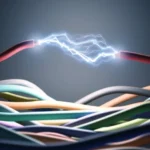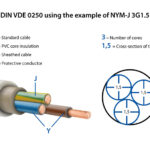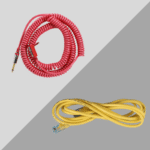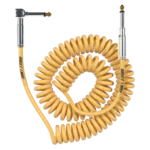 What Is a Coaxial Cable?
What Is a Coaxial Cable?
A coaxial cable, commonly known as coax cable, is a type of electrical cable used to transmit data, video, and audio signals. It is commonly used for internet connections, television signals, radio transmission, and data communication systems. The term 'coaxial' refers to the way the inner conductor and the outer shielding share a common axis, which enhances the cable's ability to resist electromagnetic interference (EMI).
Coaxial cables are essential in delivering high-quality, high-speed signals across long distances with minimal signal loss. They have been widely used in home networking, broadcasting, and telecommunications for decades.
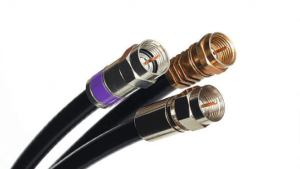
What Is a Coaxial Cable
 What Is a Coaxial Cable Made Of?
What Is a Coaxial Cable Made Of?
A typical coaxial cable consists of several key components that work together to ensure proper signal transmission and protection against external interference. The main components of a coaxial cable include:
- Inner Conductor: The central wire, usually made of copper or aluminum, that carries the electrical signal.
- Insulating Layer: Surrounding the inner conductor, this layer prevents short circuits and isolates the core from the outer layers. It is often made of materials like plastic or foam.
- Shielding: Coax cables feature a shielding layer (usually made of metal mesh or foil) that surrounds the insulating layer. The shielding helps to protect the signal from external electromagnetic interference (EMI) and reduces signal degradation.
- Outer Jacket: The final protective layer that surrounds the shielding. This is typically made from durable PVC (Polyvinyl Chloride) or LSZH (Low Smoke Zero Halogen), providing additional protection against physical damage and environmental factors.
 Types of Coaxial Cables
Types of Coaxial Cables
There are different types of coaxial cables, designed for various applications. The most commonly used types are:
1. RG-6 Coaxial Cable
- Description: RG-6 is the most commonly used coaxial cable in residential settings.
- Use: It’s typically used for satellite TV, cable television, and internet connections.
- Advantages: Offers excellent high-frequency performance and is ideal for long-distance signal transmission.
2. RG-59 Coaxial Cable
- Description: RG-59 is often used for shorter cable runs, typically for low-frequency signals.
- Use: Often used in older television setups, closed-circuit television (CCTV) systems, and some older audio/visual equipment.
- Advantages: More flexible than RG-6, but it has higher signal loss over long distances, making it unsuitable for long-distance transmission.
3. RG-11 Coaxial Cable
- Description: RG-11 cables are thicker and less flexible than RG-6 but provide lower signal loss over long distances.
- Use: Typically used for longer cable runs, like in cable TV installations, satellite systems, or networking.
- Advantages: Provides stronger signal quality over longer distances, making it ideal for large-scale installations.
4. Tri-Shield and Quad-Shield Coaxial Cable
- Description: These types of cables have multiple layers of shielding to further protect the signal from interference.
- Use: Often used in environments where there is a high level of external interference, such as urban areas or data centers.
- Advantages: Provides superior protection against interference, ensuring signal integrity in noisy environments.
 How Does Coaxial Cable Work?
How Does Coaxial Cable Work?
Coaxial cables transmit signals using electromagnetic waves. The inner conductor carries the electrical signal, while the shielding protects the signal from external noise and interference. This setup makes coaxial cables ideal for transmitting high-frequency signals, such as television broadcasts and internet data.
The signal travels along the inner conductor, and the shielding prevents the signal from being disturbed by external interference. The outer jacket provides additional protection, making coaxial cables suitable for both indoor and outdoor installations.
 Common Uses of Coaxial Cable
Common Uses of Coaxial Cable
Coaxial cables are used in a variety of applications due to their ability to transmit high-frequency signals with minimal interference. Here are some of the most common uses of coaxial cables:
- Cable Television (TV): Coaxial cables are widely used to transmit television signals from cable providers to your TV set.
- Internet and Networking: Coaxial cables are often used to connect your modem or router to the internet, especially in broadband and fiber-optic setups.
- Satellite Television: Used to carry signals from satellite dishes to set-top boxes for satellite TV services.
- CCTV Systems: Coaxial cables are commonly used in closed-circuit television (CCTV) setups to transmit video signals from cameras to monitors or recording devices.
- Radio Transmission: Used for transmitting radio signals between radio equipment and antennas.
 Advantages of Coaxial Cables
Advantages of Coaxial Cables
Coaxial cables are favored for several reasons, including their high performance, flexibility, and durability. Here are some of the main advantages:
1. High Signal Integrity
Coaxial cables provide excellent protection against electromagnetic interference (EMI) due to their shielding, making them suitable for high-frequency and high-speed signal transmission.
2. Versatility
Coaxial cables are versatile and can be used in a wide range of applications, from television connections to high-speed internet and CCTV systems.
3. Durability
With their robust construction and protective shielding, coaxial cables are more resistant to physical damage and environmental factors compared to other cable types.
4. Wide Availability
Coaxial cables are widely available in a variety of types and lengths, making them easy to find and cost-effective for many different applications.
 How to Choose the Right Coaxial Cable
How to Choose the Right Coaxial Cable
When choosing a coaxial cable, consider the following factors:
- Purpose: What do you need the cable for? Is it for television, internet, or CCTV? Different applications require different types of coaxial cables (e.g., RG-6 for long-distance TV or RG-59 for short-distance audio/video).
- Signal Quality: Choose a coaxial cable with sufficient shielding (like Tri-shield or Quad-shield) if you need high-quality, interference-free signal transmission.
- Distance: For longer cable runs, opt for RG-6 or RG-11, which offer lower signal loss over long distances.
- Environment: Consider outdoor-rated coaxial cables if you need to run the cable outdoors, as they are specially designed to withstand the elements.
 Coaxial Cables from TOT Wire & Cable
Coaxial Cables from TOT Wire & Cable
At TOT Wire & Cable, we offer high-quality coaxial cables for all your data transmission needs. Our cables are designed to provide superior signal quality and reliable performance across a wide range of applications, from cable TV installations to high-speed internet connections.
Features of Our Coaxial Cables:
- Durable outer jacket for added protection
- Multiple layers of shielding for superior signal integrity
- Wide range of cable types including RG-6, RG-59, and RG-11
- Flexible and easy to install, ideal for both residential and commercial use

 FAQ: Common Questions About Coaxial Cables
FAQ: Common Questions About Coaxial Cables
Q: Can I use RG-59 coaxial cable for TV?
A: RG-59 is suitable for short distances, but RG-6 is generally preferred for TV connections due to its better signal quality and lower attenuation over longer distances.
Q: Is coaxial cable the best option for internet connections?
A: Coaxial cable is commonly used for broadband internet connections due to its ability to transmit high-frequency signals. However, in some modern setups, fiber optics may offer faster speeds.
Q: How far can I run a coaxial cable?
A: The distance depends on the type of cable. For RG-6, you can run it up to 100 meters without significant signal loss. For longer distances, you may need an amplifier or signal booster.
 Conclusion
Conclusion
Coaxial cables have been a staple in the telecommunications and broadcasting industries for decades. Whether you're connecting your TV to a satellite, setting up a CCTV system, or transmitting data across your network, coaxial cables provide reliable, high-quality performance.
With TOT Wire & Cable, you can trust that our coaxial cables will deliver the best signal integrity, durability, and performance for your needs.

 What Is a Coaxial Cable?
What Is a Coaxial Cable? What Is a Coaxial Cable Made Of?
What Is a Coaxial Cable Made Of? Types of Coaxial Cables
Types of Coaxial Cables How Does Coaxial Cable Work?
How Does Coaxial Cable Work? Common Uses of Coaxial Cable
Common Uses of Coaxial Cable How to Choose the Right Coaxial Cable
How to Choose the Right Coaxial Cable Coaxial Cables from TOT Wire & Cable
Coaxial Cables from TOT Wire & Cable FAQ: Common Questions About Coaxial Cables
FAQ: Common Questions About Coaxial Cables Conclusion
Conclusion